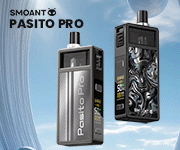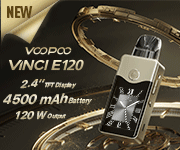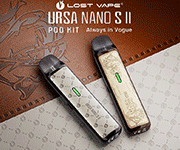You are using an out of date browser. It may not display this or other websites correctly.
You should upgrade or use an alternative browser.
You should upgrade or use an alternative browser.
Home made magnetic stirrer
- Thread starter Vaping Daz
- Start date
Vape Diesel
Postman
- Joined
- Nov 28, 2016
- Messages
- 103
This looks great pal. It's been a while since I completed any electronics projects, but I'm pretty tempted to devote a Sunday to this!
Vaping Daz
Initiate
- Joined
- Nov 26, 2016
- Messages
- 29
Hi all.
Just a quick update, I left this stirring for 25 minutes, and it was faultless. I whipped the top off and felt the electronics, and they were stone cold
I'll be making 2 x 60ml batches tomorrow after work, so I'll video this mixing the full 60ml worth of ingredients. "Hopefully" it will do it just fine.
Just a quick update, I left this stirring for 25 minutes, and it was faultless. I whipped the top off and felt the electronics, and they were stone cold

I'll be making 2 x 60ml batches tomorrow after work, so I'll video this mixing the full 60ml worth of ingredients. "Hopefully" it will do it just fine.
Vaping Daz
Initiate
- Joined
- Nov 26, 2016
- Messages
- 29
Yes, success!
I warmed up the ingredients before I started, as I store them in my workshop, so I brought them indoors and put everything in hot water. Measured everything out and added it to the beaker.
1st attempt. I put it on the magnetic stirrer, and initially the two small magnets that I had on the fan hub inside weren't strong enough to keep the stir bar going, and the bar kept losing the magnetic pull. So i doubled up the magnets as I had left enough head room between the fan hub and the lid just in case.
2nd attempt, success. It was amazing to see as the viscosity between water that I used in my tests, and these ingredients (60vg/40pg), and you could see the separation initially, and then the vortex started to slowly pull the top layer down through the rest, and then the cavitation started to really aerate the mix. I done a 30 minute mix, then let it stand for about an hour, and then done another 30 mix. The bubbles have disappeared and it is looking lovely!
My biggest stir bar is only 20mm, so I'm going to order some 25 and 30mm ones to see what they do.
Improvements? Yes, although not strictly necessary. I'm going to play around with resistor sizes as the 330 ohm resistor isn't allowing enough voltage through to the fan IMO, and I have ordered some more components in order to make a better designed circuit board. It is a trial, as I said much earlier, I have used the parameters of someone else's build, but they use theirs to make home brew beer, so they don't have the same thick ingredients that we do.
I would advise, if you're going to make your own stirrer, to avoid just using a switch, the potentiometer and the fan, as this puts too much stress on the pot causing it to get very hot. The more stress caused by the viscosity of the liquids we use would put a lot on the pot, and the way I've done it relieves that stress as the voltage regulator takes it away, which it's designed to do.
I warmed up the ingredients before I started, as I store them in my workshop, so I brought them indoors and put everything in hot water. Measured everything out and added it to the beaker.
1st attempt. I put it on the magnetic stirrer, and initially the two small magnets that I had on the fan hub inside weren't strong enough to keep the stir bar going, and the bar kept losing the magnetic pull. So i doubled up the magnets as I had left enough head room between the fan hub and the lid just in case.
2nd attempt, success. It was amazing to see as the viscosity between water that I used in my tests, and these ingredients (60vg/40pg), and you could see the separation initially, and then the vortex started to slowly pull the top layer down through the rest, and then the cavitation started to really aerate the mix. I done a 30 minute mix, then let it stand for about an hour, and then done another 30 mix. The bubbles have disappeared and it is looking lovely!
My biggest stir bar is only 20mm, so I'm going to order some 25 and 30mm ones to see what they do.
Improvements? Yes, although not strictly necessary. I'm going to play around with resistor sizes as the 330 ohm resistor isn't allowing enough voltage through to the fan IMO, and I have ordered some more components in order to make a better designed circuit board. It is a trial, as I said much earlier, I have used the parameters of someone else's build, but they use theirs to make home brew beer, so they don't have the same thick ingredients that we do.
I would advise, if you're going to make your own stirrer, to avoid just using a switch, the potentiometer and the fan, as this puts too much stress on the pot causing it to get very hot. The more stress caused by the viscosity of the liquids we use would put a lot on the pot, and the way I've done it relieves that stress as the voltage regulator takes it away, which it's designed to do.
Vaping Daz
Initiate
- Joined
- Nov 26, 2016
- Messages
- 29
If I was to build the circuit boards, would anyone be interested?
Vape Diesel
Postman
- Joined
- Nov 28, 2016
- Messages
- 103
It would depend mostly on cost to be honest, but I potentially could be. I'd like to give it a go myself but it's been so long since I did anything like this that it could just end up on my heap of unfinished ideas/projects.
If you were to build the circuit boards, what else would need doing to get it working? Just attaching all the various components?
If you were to build the circuit boards, what else would need doing to get it working? Just attaching all the various components?
Vaping Daz
Initiate
- Joined
- Nov 26, 2016
- Messages
- 29
The board would be complete, and ready to fit. You'd just need to solder the wires to the switch, the jack plug socket and the fan.It would depend mostly on cost to be honest, but I potentially could be. I'd like to give it a go myself but it's been so long since I did anything like this that it could just end up on my heap of unfinished ideas/projects.
If you were to build the circuit boards, what else would need doing to get it working? Just attaching all the various components?
You'd have to supply the switch, jack plug socket and fan, and the box. The wires will be labelled telling you were they go. I could fit the socket and supply the 2.5mm plug but you'd have to establish what is live from your power supply (use a multimeter set to DC).
I cannot charge you for my time as my job doesn't allow me to have an undisclosed second income, so all I can charge for is the parts. and postage.
I've got some components coming down, so I'll build a board and tell you the cost inc. the plug and socket. Should be around the £10 mark.
Vape Diesel
Postman
- Joined
- Nov 28, 2016
- Messages
- 103
Hey, sorry for the late reply, this period is super busy for me. It's something I'll have to think on.
Aside from anything else I'd need to dig out my soldering iron etc and find somewhere to store the whole lot. I'm already testing the limits of my girlfriend's patience for how much space vape stuff can take up in the new flat!
Aside from anything else I'd need to dig out my soldering iron etc and find somewhere to store the whole lot. I'm already testing the limits of my girlfriend's patience for how much space vape stuff can take up in the new flat!
Vaping Daz
Initiate
- Joined
- Nov 26, 2016
- Messages
- 29
No worries.
My larger stir bars arrived, and it works even better now. Over the Christmas break I'll make a new board for mine, just to tidy things up and try a smaller resistor. However, I'm not sure if it is necessary as now I've got the larger stir bars, it stirs immediately through a 50/50 mix with ease, and plenty of speed.
My larger stir bars arrived, and it works even better now. Over the Christmas break I'll make a new board for mine, just to tidy things up and try a smaller resistor. However, I'm not sure if it is necessary as now I've got the larger stir bars, it stirs immediately through a 50/50 mix with ease, and plenty of speed.
Similar threads
- Replies
- 2
- Views
- 2K














